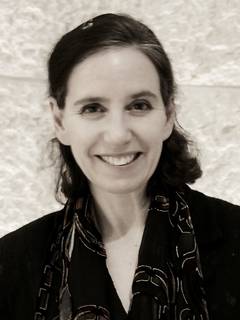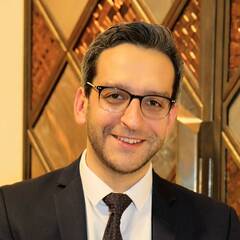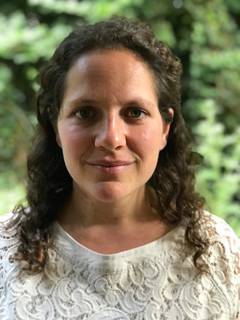TFTW Archive 2022 December


Shabbat Vayetze
2 December 2022
Dear Members and Friends,
Vayetze Ya’akov – so begins this week’s parashah – ‘Jacob left Beersheba and set out for Haran…’ (Genesis 28:10). Jacob, the favoured son of his mother, who has bargained for the birthright of his older twin brother and deceived his father into giving him the blessing reserved for the firstborn, is forced to leave home to escape from Esau who is set to kill him. He sets out on his great adventure – there is a dream of a stairway and angels ascending and descending, an encounter with his cousin Rachel at the well, marriage, children and the acquisition of wealth. This is the Jacob’s story – ‘history’, the story of the flawed hero, his journey to a foreign land and his interior spiritual journey where he encounters the God of his father and grandfather.
But there is also another story that occurs within this parashah. It is ‘herstory.’ This story focuses, not on the male-centred story of Jacob and his adventures, but on Rachel – on her early morning departure from home to water the flock at the well, where a stranger suddenly rolls the stone from the mouth of the well, demonstrating his macho strength in front of the townspeople. As if that is not enough, this unknown foreigner kisses Rachel, whom he has never seen before and bursts into tears. In a different version of this story, seen from Rachel’s viewpoint, it would record the conversation between Rachel and her older sister Leah: ‘I met this man at the well this morning. What a show off! And he invaded my personal space by kissing me and told me that he is our cousin.’
And instead of telling us that ‘Jacob was in love with Rachel’, vowing to work for Laban for seven years, it might tell us something about Rachel’s feelings for Jacob. We know this story only from his point of view. But how did Rachel feel about him? Had she fallen in love? There are midrashim that fill in the gaps for us – that tell us that in the darkness of the wedding night, as Laban switched Rachel for Leah, Rachel gave her sister the signs that she had been given by Jacob so that he would recognise her and so that Jacob would not suspect he had married the ‘wrong’ sister.
There is much more to say about the stories of these women – the ease of one and struggle of the other to conceive their children, the naming of their sons and eventually, towards the end of this week’s parashah, how the women cope with Jacob’s sudden decision to uproot his whole family, the women, the children – those of a tender age and upwards, the animals he has acquired – and how they steal off without Laban’s knowledge.
Her story would focus on the sisters’ disenchantment with their father, who seems to have disinherited them and made them feel like outsiders: ‘Have we any longer a portion or inheritance in our father’s house? Are we not like foreigners to him? He sold us and has completely eaten up our money!’ The women support each other as a result of their father’s egregious behaviour.
What do we make of Rachel’s stealing her father’s household goods, of Laban barging into the women’s tents – first Leah’s, then the tents of the two maids and then Rachel, who is sitting on those same idols, hidden in a camel bag. I’m sorry I can’t get up in your presence, she says to her father, ‘but the way of women is upon me.’ These intensely personal details are not lost on us – they are part of her story, herstory.
It is a great imaginative exercise to turn round our interpretation of these stories and to see them through the eyes of the women, or outsiders and strangers. Telling the story this way does two things: it strengthens the identity and consciousness of the other. It connects us to the past and helps us to feel part of it; these are our memories in some sense, herstory and not only history. Secondly, it places us in the shoes of others, it builds and reinforces our empathy with those who have been marginalised for so long in our society. It is through a different lens that we hear the voices of those who have remained unheard for millennia. Eventually, when enough of us acknowledge that there is not only one telling, one narrative of the generations, we can hope for a change towards a world that is more inclusive, more diverse and capable of greater love and understanding.
Shabbat Shalom,
Alexandra Wright

Where is Home?
9 December 2022
Dear Members and Friends,
Mary Howe is a contemporary American poet. Inspired by Stephen Hawking’s theory of Singularity, she wrote a poem I would like to share with you today. According to this theory, Hawking argued that the universe began as a small, infinitely dense point called a singularity. Everything we know today was once a single point that expanded into existence after the Big Bang. Considering this theory, Howe tried to imagine what it meant for human existence and wrote this poem.
Singularity by Marie Howe
(after Stephen Hawking)
Do you sometimes want to wake up to the singularity
we once were?
so compact nobody
needed a bed, or food or money—
nobody hiding in the school bathroom
or home alone
pulling open the drawer
where the pills are kept.
For every atom belonging to me as good
Belongs to you. Remember?
There was no Nature. No
them. No tests
to determine if the elephant
grieves her calf or if
the coral reef feels pain. Trashed
oceans don’t speak English or Farsi or French;
would that we could wake up to what we were
—when we were ocean and before that
to when sky was earth, and animal was energy, and rock was
liquid and stars were space and space was not
at all—nothing
before we came to believe humans were so important
before this awful loneliness.
Can molecules recall it?
what once was? before anything happened?
No I, no We, no one. No was
No verb no noun
only a tiny tiny dot brimming with
is is is is is
All everything home
Howe’s premise is beautifully simple and very creative. When everything is located at a single point, this point becomes home. I found this idea very moving. However far you look around you, everything has the same beginning. Therefore, everything is your home.
It is this concept of home that intrigues and fascinates me. Where is home? Why is home so crucial for our well-being? What can we do to help ourselves and others to have a place called home?
Sometimes the world seems so big and scary that many naturally prefer to stay in a familiar and secure place. Perhaps, this was the reason for changing Judaism from a Temple-based religion to synagogue and home-based.
Jews used to have the Temple, and Jewish spiritual life took place there. Since the destruction of the Temple and the dispersion of Jewish people around the world, home-based practices started to develop. Perhaps, Chanukkah is the most important of home-based festivals in Judaism.
The main Chanukkah ritual is lighting candles. The modern tradition is to light candles and put Chanukkiya on a window so it can be seen from the outside. By doing so, in addition to making our homes more beautiful, brighter, and cosier, we also communicate with the outside world. Talmudic Rabbis say that it is for the sake of publicising the miracle. I think the message is deeper than that. By making Channukah candles visible from the outside, we symbolise that everywhere should feel like home, everywhere should become a warm, bright and cosy space, and everywhere should be beautiful, familiar and secure.
This year Chanukkah begins on Sunday 18 December. Please come to one of the LJS flagship events – the Multifaith Chanukkah celebration Monday, December 19th at 4:00 pm. All visitors are welcome along with friends and colleagues from different faith communities. The programme will include a special guest speaker Dame Maureen Lipman, lighting of the Chanukkah candles, greetings from members of other faith communities, doughnuts, latkes and more. Details and registration are here: https://www.ljs.org/event/Chanukkah-2022
May this upcoming Chanukkah become a warm and safe space for all of us, may our homes always be cosy and safe, and may we do all we can to extend the home-like feeling as far beyond our homes as we can.
Shabbat Shalom
Rabbi Igor

Chanukkah
23 December 2022
Dear Members and Friends,
Shabbat Shalom and Chanukkah Sameach.
In thinking about our festival of light and finding light in the darkness I’ve found myself reflecting on the youngest members of our synagogue family and the completion of our first term of learning this year.
We have completed our first term of Rimon and now have a few weeks of break before we begin our next term of learning and community building. It has been a truly packed term and a true delight to be a part of the Rimon community. Those of you who are parents of Rimon students are aware of how much has happened within the walls of the community (and the minds and hearts of our students) in the last 4 months. Every week around 100 students come to the synagogue to learn and create and build relationships. The LJS prioritises the identity development, pastoral support and learning of the youngest members of the synagogue. We have a fantastic group of teachers and assistants that come together weekly to teach Judaic Studies and Hebrew in creative ways. For those of you who aren’t as familiar with what happens at Rimon let me share with you some of the highlights of this past term:
● We had over 30 young members volunteer to help lead our festival services.
● Children and families participated in a Tashlich service at Regent’s park- symbolically casting away their sins into the pond in the form of bird seed.
● We’ve had several new families join our Rimon learning community.
● Together we honoured mitzvah day- supporting local and international causes.
● Our L’dor Va’Dor service involved every student as they led their families in prayer and music.
● Our parents and students helped to build and decorate the Sukkah while song and Israeli dancing filled the Montefiore Hall.
● We made a piece of art using finger prints from all of our students honouring and celebrating the life, memory and legacy of Queen Elizabeth.
● We had 17 LJS students sleep over at the synagogue with LJY-Netzer.
● We have 11 KT students signed up for our first Amsterdam trip since COVID, being planned for February.
● We had a packed Assembly Hall with our Zayin and Chet families for the Bar/Bat Mitzvah Seminar.
At the end of this last term we joined together for a pre-Chanukkah assembly. Each teacher was asked to share with the community of students a favourite part from the last term. The answers were varied and wonderful. One teacher commented on how wonderful it was that the youngest students had just had a very intense dreidel tournament and that everyone celebrated the winners and miraculously waited until the end to eat their chocolates! Another teacher shared that her students’ humour was the best part of her term.
Our students are brilliant. They are remarkably kind and clever and it is such a diverse community of learners. When helping his class to decorate a tzedakah box one of our assistants used a ruler and a whole heap of written maths and trigonometry to work out how to draw a perfectly formed Star of David without having a pair of compasses available. Another student re-wrote the words to the 12 Days of Christmas turning it into ‘The 8 nights of Chanukkah’ and had the courage to sing this during Kiddush to all who were gathered. A KT student volunteered her time every week to join the classes of some of the younger students to help them with their art projects. Two of our students met multiple times with Alasdair Nesbit to perfect their shofar blowing skills to then lead the community in the spiritual horn blast. I could go on and on….and on!
I share this all with you not only because I want you to join in celebrating our young members and their teachers but also because in this darkest season of the year it is essential to cling to the light. It is clear that our youth are enlightened. These last few years have been difficult ones and our children are forming their understanding of themselves and the world at large in the time of a global pandemic, climate crisis, a time when so many within our city and our synagogue community are struggling financially and emotionally- yet somehow these resilient young people still seem to have hope, compassion for one another, big picture thinking and wisdom about the world and loads of laughter. When I look at the young people in our community I feel hopeful about our future.
There is a chassidic story of a young student who complained to his Rabbi: when I am studying Torah I feel filled with light and life, but as soon as I cease from study this feeling leaves me. The Rabbi replied, “You are like someone who walks through a forest on a dark night, accompanied by a companion who carries a lantern. Then their paths divide, and each must go alone. Carry your own lantern, let your light penetrate the darkness until the darkness itself becomes light.” Our hope is that by being a part of Rimon we are helping our young people to be aware of the lanterns they hold within themselves and their inherent light.
May the light in your life help you to embrace the darkness with hope and resilience.
Happy Chanukkah,
Elana
Thu, 6 November 2025
15 Cheshvan 5786
Return...

that you inform the office and bring a valid photo ID.
Privacy Settings | Privacy Policy | Member Terms
©2025 All rights reserved. Find out more about ShulCloud
